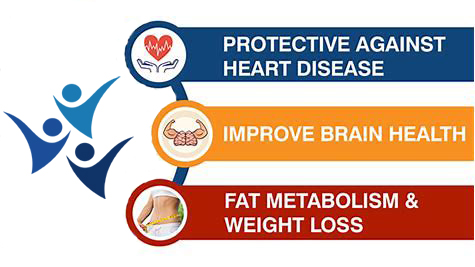L-Carnitine tartrate (LCLT) is the supplement form of carnitine, a substance that plays a role in energy production. Your body typically makes enough carnitine to meet its needs. Therefore, it's not necessary for healthy adults to take carnitine supplements, according to the Office of Dietary Supplements. Nevertheless, due to its role in energy production, manufacturers market carnitine tartrate for sports performance and fat loss. Carnitine may provide benefits for heart patients. Consult your doctor before taking carnitine supplements.

The purpose of this investigation was to examine the influence of L-carnitine L-tartrate supplementation using a balanced, cross-over, placebo-controlled research design on the anabolic hormone response (i.e., testosterone [T], insulin-like growth factor-I, insulin-like growth factor-binding protein-3 [IGFBP-3], and immunofunctional and immunoreactive growth hormone [GHif and GHir]) to acute resistance exercise. Ten healthy, recreationally weight-trained men (mean +/- SD age 23.7 +/- 2.3 years, weight 78.7 +/- 8.5 kg, and height 179.2 +/- 4.6 cm) volunteered and were matched, and after 3 weeks of supplementation (2 g LCLT per day), fasting morning blood samples were obtained on six consecutive days (D1-D6). Subjects performed a squat protocol (5 sets of 15-20 repetitions) on D2. During the squat protocol, blood samples were obtained before exercise and 0, 15, 30, 120, and 180 minutes postexercise. After a 1-week washout period, subjects consumed the other supplement for a 3-week period, and the same experimental protocol was repeated using the exact same procedures. Expected exercise-induced increases in all of the hormones were observed for GHir, GHif, IGFBP-3, and T. Over the recovery period, LCLT reduced the amount of exercise-induced muscle tissue damage, which was assessed via magnetic resonance imaging scans of the thigh. LCLT supplementation significantly (p < 0.05) increased IGFBP-3 concentrations prior to and at 30, 120, and 180 minutes after acute exercise. No other direct effects of LCLT supplementation were observed on the absolute concentrations of the hormones examined, but with more undamaged tissue, a greater number of intact receptors would be available for hormonal interactions. These data support the use of LCLT as a recovery supplement for hypoxic exercise and lend further insights into the hormonal mechanisms that may help to mediate quicker recovery.
Getting the latest science behind the importance of LCLT. Here are some results from those studies and what they have concluded about LCLT. Will they really improve muscle recovery and growth efforts?
The influence of testosterone (T) on skeletal muscle protein synthesis is mediated by the androgen receptor (AR). T binding to the AR converts the latter to a transcription factor; the T-AR complex then translocates to the nucleus and associates with DNA to regulate androgen-specific gene expression.1
Animal and clinical studies indicate that the AR signaling pathway is required for appropriate development of skeletal muscles, since it regulates increases in lean muscle mass, muscle strength, and muscle protein synthesis. The physiological importance of AR for muscle protein accretion has been demonstrated, as muscle hypertrophy is attenuated by AR blockade.2
There are several different forms of carnitine available. Here are a few of the most common types:
Acetyl-L-Carnitine: This type of carnitine is thought to benefit brain health and memory and has been processed so that it’s able to easily pass the blood-brain barrier.
Propionyl-L-Carnitine: This form helps increase levels of nitric oxide in the body, which dilates the blood vessels to promote better blood flow.
L-Carnitine Fumarate: Preliminary research suggests that this type of carnitine could help support bone health to protect against age-related bone loss.
Several human and animal investigations have researched the physiological importance of the AR in exercise-induced muscle hypertrophy,1-8 emphasizing the importance of exercise at increasing the AR content,1-3,5,6 seemingly in a fiber-specific manner.4
Resistance exercise (RE), for instance, elicits a significant decrease in AR content in type-I slow oxidative, and a significant increase in type-IIb fast glycolytic fibers.
Type-IIb fibers are those white fibers, also referred to as fast twitch B or fatigable fibers, that are most beneficial in sports such as sprinting. These fibers have low myoglobin content, few-mitochondria, and few blood capillaries, but contain a large amount of glycogen - these muscles primary source for energy during short, intense bursts in activity.
In untrained men, a single bout of heavy RE has been reported to up-regulate AR mRNA 48h post-training.3,6 Repeated RE bouts (each separated by 48h) instead, have been shown to increase AR mRNA and protein expression.3
Such augmentation correlated with elevated serum testosterone levels and corresponded to significant increases in myofibrillar protein. Testosterone is the primary hormone that interacts with skeletal muscle tissue, and when elevated leads to increased muscle growth.
In trained individuals, high-volume high-intensity RE appears to cause a significant decrease in AR protein content (-46%) at 1h post-exercise, probably due to protein catabolism induced by exercise-related stress.5
Such a negative effect, however, seems to be somewhat mitigated by post-RE feeding, which has been shown to increase muscle AR content, resulting in increased testosterone tissue uptake and enhanced luteinizing hormone (LH) - which also has been shown to elevate testosterone levels - release via feedback mechanisms.1 These observations provide a possible mechanism for increased protein synthesis following post-RE food intake